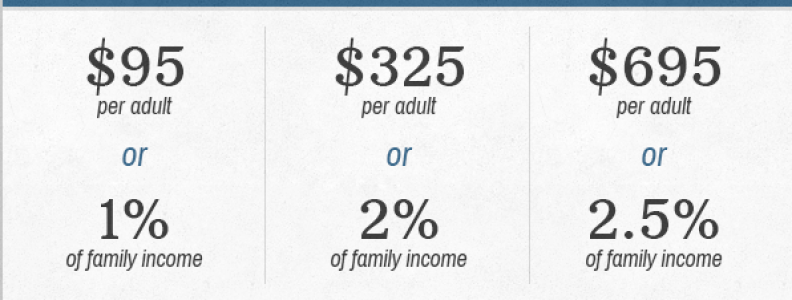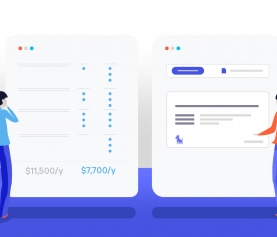
Health Insurance tax basics – Self Employed: Taxes & Penalty
Taxes will never be fun, but ignoring them can mean leaving money on the table. In fact, as an independent worker, you can save a lot of money each year by reducing the amount you owe the government in taxes! We’re here to help you keep more of your hard-earned money with a few quick Trek tips. We also refer CPA’s for a business solution which are trusted advisers that will work for you to take full advantage of offering a tax plan to sole proprietors, C-Corp, S-Corp or LLC with navigating the tax complexity that will impact your business.
Taxes Paid by Independent Workers:
Independent workers file an annual tax return just like everyone else, but they file a Form 1040 to report any self-employment income. Depending on your circumstances, you may also be required to make quarterly tax payments. For employers with employees, the 1095 tax form is required to report to the IRS on who is eligible for benefits through a group plan.
The amount of taxes you pay depends on your taxable income. The 1040 form helps you identify your taxable income for the IRS, which basically works like this:
Once your taxable income is determined, the IRS places you in a “tax bracket” based on this number. Your tax payment is determined by your bracket. You pay a fixed amount up to a certain threshold, then a percentage of everything over that threshold.
Trek example: If you are single and you made $30,000 in 2015, you’re in a 15% bracket, but you actually pay $922.25 (for your first $9,225 of income) plus 15% of $20,775 (for the rest of your income). This amounts to a total tax payment of $4,038.50 ($922.25 + $3,116.25). Tax deductions help you reduce what you owe in taxes. You’re probably thinking: “Great, so how do I reduce my ultimate tax bill?” Enter the tax deduction. For independent workers like you, tax deductions most often take the form of whatever costs you take on while running your business, whether that’s driving for Uber or designing logos for a client. These expenses can be subtracted from your income to reduce what you owe the government!
Trek tip: Finding more deductible expenses doesn’t just save you money by lowering your taxable income. It can actually help you drop to a lower tax bracket, which means paying less overall. Wahoo!
Trek tip: The easiest way to maximize the number of expenses you can deduct from your income is to learn to look for them all the time and record them as you go. It might seem like a hassle at first, but it’s definitely worth it.
Deductions to keep an eye out for:
- Mileage: In 2015 you’ll be able to expense $0.575 for every mile you drive, whether that’s commuting to gigs, picking up Uber passengers, or developing your business.
- Health Insurance: You can deduct the amount you pay in health insurance premiums (the monthly payments to the insurance company) for yourself and your family.
- Medical Expenses: If you have to pay out-of-pocket for medical expenses on top of your health insurance premiums, (full list of acceptable expenses provided by the IRS), you can deduct those payments from your taxable income. The catch: These medical expenses have to exceed 10% of your gross income, which is your total income for the year.
- Business Supplies: Whenever you spend money in service of your business, you should keep receipts. This includes things like your work phone, printer paper, a tool belt, and even the little water bottles you buy for passengers if you drive for Uber or Lyft.
- Travel: Heading to a conference or business meeting? Keep your receipts for airfare, hotels, rental cars, and other travel expenses. Keep track of spending on meals, especially things like taking a customer to dinner. Some percentage of client meals are deductible. Submit a specific inquiry if you’re not sure about how to treat these or what percentage to apply and our team can help you out!
- Printing: Signs, business cards, or other printed matter to support your business all count as deductible expenses.
- Postage: Mailing in applications, business filings, contracts, or anything else in the course of your business? Keep tracking these, too.
- Parking: If you rent a garage space for a car in the course of your business or you park for client engagements, business meetings, business trips, or trips to the doctor, keep track of your payments with receipts.
- Phone: Your business phone bill, including the portion of your cell phone bill that was the result of running your business, is deductible.
- Home office: If you work at home, identify the percentage of your home you use for your business. This can be done by estimating the square footage of your office as a percentage of your home’s overall square footage. Multiply that percentage by your rent, mortgage, and utility bills to calculate the amount you can deduct from your income.
- Fees, Dues, Subscriptions: If you’re a member of any professional associations that require dues, subscribe to publications related to your business, or you pay fees to an organization or government entity in connection with your business, you guessed it, you can deduct these expenses!
Tips for tracking tax deductible expenses:
Now that you know what types of expenses to look for, you might be wondering where to start when it comes to tracking these expenses. The most important thing is to pay attention to when you spend in these categories in support of your business. Try to put all of your records in one place, like an email folder or camera folder where you keep receipt images. If you have more than one business, remember to note which of your expenses relates to each business. Keeping track of the basic purpose of the expense is also important (i.e.: “lunch with client John Doe”). These don’t go on your tax form, but you’ll want to have them in case of an audit.
Interested in an easier way to track these expenses? Let us know and we’ll give you early access to some cool products we’re building to help you with this task.
How this all fits together: A Trek example
Let’s say you drive for Uber and Lyft. You make $42,000 in total income (i.e.: the dollar amount you get from Uber and Lyft together, assuming these are your only income sources). Over the course of the year, you drive 25,000 miles to earn this income. These miles are worth a deduction of $14,375 (25,000 miles x $0.575 per mile)! You also buy $325 worth of mints and water bottles for passengers. You pay $3,600 in health insurance premiums. Assume these are your only business expenses. If you DON’T track and report these expenses, you will owe $6,293.75 in taxes to the government. If you DO track and report these expenses on your tax return, you will owe $3,093.50 to the government. Let’s recap: Because you just paid attention to the right stuff, you saved over $3,000 dollars, cutting the money you owe to the government in half! Imagine all the things you can do with those savings!
Still confused? Let us know what burning tax questions you have by emailing us at Info@TrekInsuranceGroup.com





